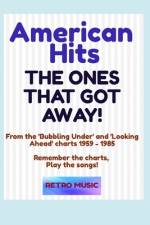av David Armstrong
351
The phrase "Rhythm and Blues," often abbreviated to "R&B," emerged during the 1940s as a replacement for the term "race music," and served as a broader marketing term describing African American music. R&B became one of the major constituents of rock and roll, along with jazz and country. During the latter part of the 1950s, this led to doo-wop and in the 1960s soul music as made commercially popular by record labels such as Motown, Atlantic and Stax.In 1942, Billboard began the publication of a chart showcasing the best-selling African-American music, initially known as the Harlem Hit Parade, later rebranded as the Race Records chart. By 1949, Billboard introduced the Rhythm and Blues chart, popularising the abbreviation "R&B" within the mainstream music vocabulary. These distinct charts were merged into a unified Hot R&B Singles chart in October 1958.Between November 30, 1963, and January 23, 1965, Billboard suspended the R&B singles charts due to significant overlap between R&B and pop charts, particularly with the emergence of Motown. The chart was resurrected as Hot Rhythm & Blues Singles on January 30, 1965.On August 23, 1969, the term "rhythm and blues" was superseded by "soul," prompting a rebranding of the chart to Best Selling Soul Singles. Billboard justified this change, stating that "soul" better encapsulated the diverse musical output originating from African-American culture. Subsequently, in late June 1982, the chart underwent another name change, becoming Hot Black Singles, reflecting the evolving stylistic landscape of music embraced by African-American audiences, which now encompassed pop, funk, and early rap.This book covers the R&B charts from Billboard and Cash Box during the period from 1942 to 1989.























